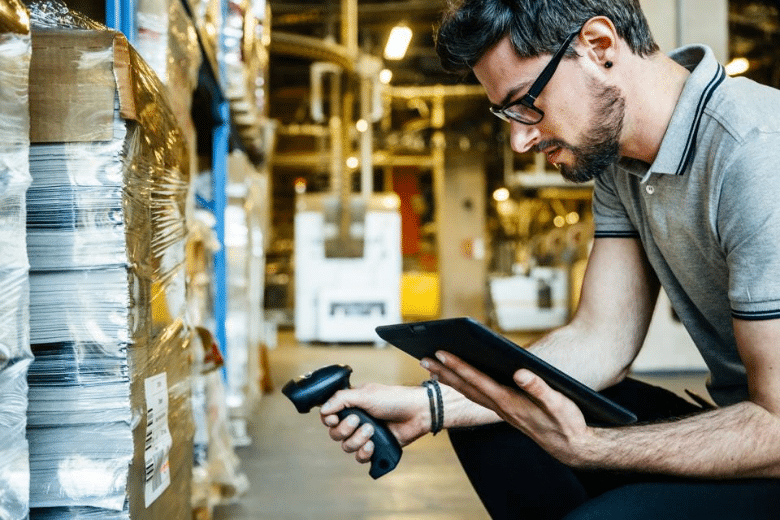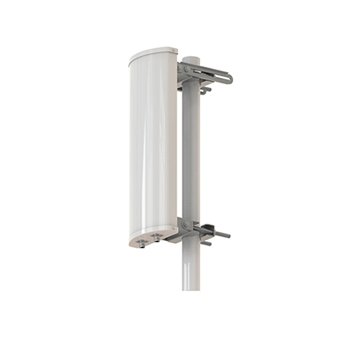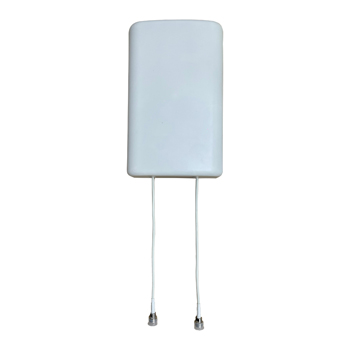RFID is a widely utilized technology in retail with the goal of enhancing inventory accuracy on a broad scale. Additionally, RFID has the potential to increase security across all of your retail locations and improve customer service. Because RFID uses more sophisticated technology, it is much more accurate and efficient when it comes to counting and tracking inventories. Because of this, it has far wider uses in retail, the majority of which are based on this trustworthy inventory visibility.

The financial advantages to a retailer’s business of implementing RFID technology within their retail estate are frequently measurable. Many tier one and tier two stores claim to have reduced shrinkage by 5% to 15%. There are several reasons why you should introduce RFID technology in addition to the apparent financial cost advantages.
Table of Contents
ToggleAdvantages of implementing RFID in retail
Using an RFID retail inventory management system has numerous advantages, some of which are as follows:
1. RFID speeds up in-store checkout
RFID can greatly enhance consumer satisfaction by expediting the checkout procedure. It does away with the need to scan barcodes and can track items that are not purchased so that customer behavior may be better understood and products can be remarketed.
A customer’s preloaded customer loyalty account will be used to tag things as they pass through on-the-spot scanners and practically eliminate the need for a traditional checkout process. At least 20% of in-store checkout times can be cut, giving salespeople more opportunity to interact with customers.
RFID can boost sales as well. If a store, for instance, sells ten various styles and sizes of jeans, he might wish to keep track of which pair of jeans is the most popular with his customers. He can resell the remaining items by using RFID to track which customers are buying which sizes and colors. RFID can also alert staff members when inventory levels are low, enabling them to remarket items already on the shelf.
An item can be identified with RFID by using a radio-frequency identification chip and antenna. This chip can be read from a distance of 100 meters and stores information about a product. It has gained popularity across a variety of businesses, and a recent study found that it at least 20% fasters in-store checkout.
Although RFID has been on the horizon for more than ten years, recent advancements are accelerating the technology. RFID offers fresh data about consumer behavior, in-store settings, and product mobility, which retailers desperately need. Companies are lagging behind without it. However, if they use the technology early enough, they can develop new skills and seize fresh possibilities.
2. It offers data in real time
Real-time data and analytics for retail are excellent with RFID. Retailers can have a far better understanding of their stock levels, stock checking, and traceability. Both the warehouse and the shop floor benefit greatly from RFID data, but it also:
- Performance tracking with KPIs
- Granular product data and analytics
- Operational excellence Recommendations that can be taken
- Checking for compliance
- Reduces dependence on past data
- Predictive capabilities for goods management and inventory counts.
3. Shipping errors or losses
Full product traceability is made possible with RFID tags, which improves customer and business trust. Internally and externally, RFID decreases supplier errors, clerical errors, and theft by more than 50%.
The cloud platform offers a dedicated e-commerce module that enables you to confirm that the shipments are accurate without creating an incorrect order and the associated logistical and labor costs for the business.
4. Sales increase
RFID is a technology that can adapt to each supply chain through customization, get the greatest outcomes for each customer, lower labor costs, and produce reliability that boosts sales.
What can Tesswave do for you?
Tesswave provide 100+ antenna products and you can contact us for antenna customized solutions, get in touch with us today to get a Free quote.
Get an Instant Quote
Get a FREE quote and we will contact you within an hour
5. Inventory Visibility
Visibility of the inventory guarantees that there will always be enough products to satisfy client demand.
- More accurate shipment
- The ideal foundation for cutting-edge multichannel retailing generates more data for superior insights.
- considerably reduces the amount of inventory (and hence working capital)
- A more connected experience and decreased out-of-stocks will increase consumer satisfaction.
6. Supply Chain Traceability
The benefits of item-level visibility for stores have already been addressed, but they are also significant for supply chains. With RFID, inbound and outbound reads are much simpler, as individual item level readings rather than SKU readings are used (stock keeping unit). This indicates that individual items, rather than just shipments or boxes, are tracked at every stage of the supply chain.
Due to the fact that picking errors and shipping errors are caught by RFID readers and fixed by warehouse workers during exception handling or outbound reads, the rate of shipping errors and picking errors is also significantly reduced by this level of stock visibility.
Stores can easily track shipments and know exactly what they will be receiving because the location or status of items and shipments is also visible in real-time. Due to the ability to store the times and dates that an item passed each read point during the supply process, every single individual item can now be fully traced.
RFID’s advantages for the supply chain include:
- Supply chain visibility at the item level
- Verify products against specific shipments.
- Improved operating efficiency
- Monitor shipments for completion
- 100% accuracy in shipping both inbound and outbound
7. Best Customer Experience
The merchant will be able to analyze and forecast the future trend by making the best use of all the data that has been stored. This makes the store more appealing and ultimately raises the standard of customer service. A few advantages are:
- High availability of products
- More time is available for customers from store employees.
- Omni channel services that are convenient
- A smooth connection between online and offline
- Mobile chat bots with AI powering them give assistance and product information.
- A vastly better fitting room experience is offered by smart changing rooms.
- RFID-enabled Point of Sale with self-checkout capabilities
Final Words
The widespread deployment of RFID in the retail sector is still in its infancy. It’s true that some retailers are concerned about the cost of deploying RFID technology. Acceptance seems unavoidable in the upcoming years, nevertheless, given the decreased installation barrier and the growing influence of consumer expectations.
Whether you’re uncertain, begin modestly. Locate merchandise in your warehouse or storeroom by using RFID tags. Analyze the busiest periods for each store. Create a virtual mirror that detects RFID tags and superimposes what the product might appear like on a buyer if you really want to push the envelope. Keep in mind that technology is nothing to be afraid of. Together, people and RFID technology may help businesses be more efficient, productive, and cost-effective.








